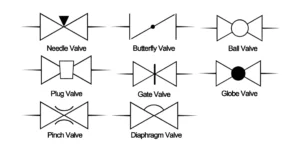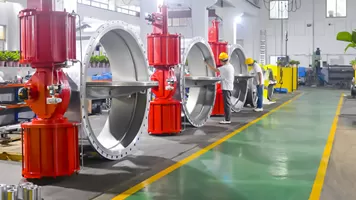Gate valves play a critical role in various industrial and commercial applications, acting as on/off devices for fluid control. Their reliability is paramount; however, leakage can pose significant challenges, leading to operational inefficiencies and safety hazards. This article explores the common causes of gate valve leakage, methods for inspection, preventive measures, and effective repair strategies to ensure optimal performance.
Common Causes of Gate Valve Leakage
Understanding the root causes of gate valve leakage is essential for effective management. Here are some of the most common reasons:
Material Aging
Over time, the materials used in gate valves can degrade. Rubber seals and gaskets may harden or crack due to exposure to temperature fluctuations and chemical agents, leading to leaks.
Improper Installation
A significant number of leaks arise from improper installation practices. If a gate valve is not aligned correctly with the piping or if it is over-tightened, it can create stress points that lead to failure.
Operational Errors
Incorrect operation, such as excessive force when opening or closing the valve, can damage the valve seat and seals, causing leaks. Training personnel on proper handling techniques is crucial.
Environmental Factors
Environmental conditions, such as extreme temperatures or corrosive environments, can also contribute to the degradation of valve components. Regular monitoring is necessary to mitigate these effects.
How to Inspect for Gate Valve Leakage
Regular inspections are vital for identifying potential leaks before they escalate into serious issues. Here are several effective inspection methods:
Preliminary Inspection Methods
Start with a visual inspection. Look for signs of leakage around the valve body and connections. Any discoloration or accumulation of fluid can indicate a problem.
Using Gas Detection Equipment
For applications involving gas, using specialized gas detection equipment can help identify leaks that may not be visible to the naked eye. This technology can provide real-time monitoring of gas concentrations.
Water Submersion Testing
A water immersion test can be an effective way to check for leaks. Submerging the valve in water while pressurized can reveal air bubbles escaping from any leaks.
Visual Inspection
Regularly inspecting the valve for signs of wear, corrosion, or damage can help identify potential issues early. Pay special attention to the seals and joints.
Best Practices for Preventing Gate Valve Leakage
Preventive measures are essential for ensuring the longevity and reliability of gate valves. Here are some best practices:
Correct Installation Techniques
Ensure that the valve is installed according to manufacturer specifications. Use proper alignment and avoid excessive tightening to reduce the risk of stress fractures.
Regular Maintenance and Inspection
Implement a routine maintenance schedule that includes regular inspections and servicing of the valve components. This can catch potential issues before they lead to leaks.
Using High-Quality Materials
Invest in high-quality gate valves and materials. Using superior materials can enhance durability and resistance to environmental factors, reducing the likelihood of leaks.
Repair Methods for Gate Valve Leakage
If a leak is detected, it’s important to take swift action to repair it. Here are common repair methods:
Identifying the Leak Source
Before performing repairs, it’s crucial to identify the exact source of the leak. This can often be done through visual inspection or testing methods mentioned earlier.
Replacing Seals
If the leak is traced to a damaged seal or gasket, replacing these components is usually a straightforward fix. Ensure that the new seals are compatible with the valve and the media being handled.
Adjusting the Gate Valve
Sometimes, leaks can be resolved by adjusting the valve. Tightening the packing or re-seating the valve can eliminate leaks without the need for more extensive repairs.
Full Replacement or Upgrade
In cases where the valve is significantly damaged or outdated, a full replacement may be the best option. Consider upgrading to newer technologies that offer improved performance and reliability.
Handling Special Situations
Certain situations may require specialized approaches to leak repair:
High-Pressure Environment Leak Management
In high-pressure systems, leaks can be particularly dangerous. Use specialized equipment and follow strict safety protocols when addressing leaks in these conditions.
Corrosive Media Leakage
For valves handling corrosive substances, ensure that all replacement components are resistant to the specific chemicals involved. Regularly inspect these valves to prevent corrosion-related failures.
Preventive Measures and Recommendations
To maintain gate valve integrity, consider the following preventive measures:
Daily Maintenance Tips
Conduct daily checks of all valves, looking for signs of leaks, wear, or other anomalies. Early detection can prevent more extensive damage.
Employee Training and Safety Awareness
Regularly train employees on the importance of proper valve operation and maintenance. Awareness of potential issues can significantly reduce the likelihood of leaks.
Conclusion
Addressing gate valve leakage through proper inspection, preventive practices, and effective repair strategies is essential for maintaining operational efficiency and safety. By understanding the causes and implementing a proactive maintenance plan, businesses can reduce the risk of leaks and prolong the life of their gate valves.
Frequently Asked Questions (FAQs)
What are the common signs of gate valve leakage?
Common signs include visible fluid accumulation around the valve, corrosion, or unexpected changes in pressure or flow rates.
How can I choose the right material for a gate valve?
Consider the type of fluid, temperature, and pressure requirements. Consult with manufacturers for recommendations based on specific applications.
How often should gate valves be inspected?
It’s advisable to inspect gate valves at least annually, with more frequent checks in high-demand or critical systems.
When should I replace a gate valve?
If the valve shows significant wear, constant leaks, or if it fails to operate correctly after repairs, consider replacing it.
Can gate valve leakage affect other equipment?
Yes, leaks can lead to pressure drops or contamination, which may affect the performance of downstream equipment.
How can I ensure the long-term reliability of my gate valves?
Implement a comprehensive maintenance schedule, use quality materials, and train staff on proper handling techniques to enhance reliability.
By following these guidelines, you can effectively manage gate valve leakage and maintain operational integrity in your systems.









